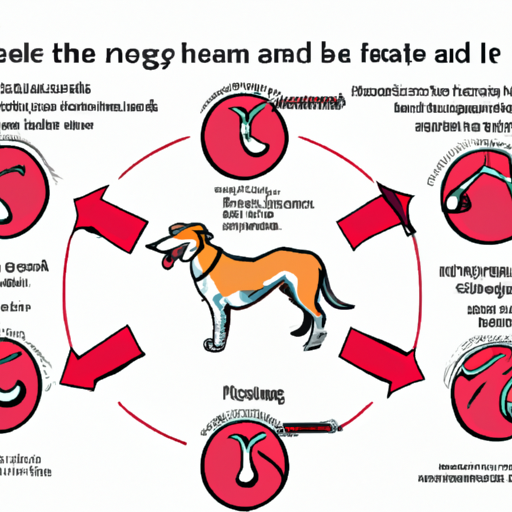Understanding The Canine Estrus Cycle
Dogs, like all mammals, have a reproductive cycle, but it’s quite different from the one humans experience. Female dogs don’t menstruate in the same way human females do. Instead, they have a cycle called the estrus cycle, which is often referred to as a dog’s “heat.” It’s important for you as a caregiver to understand this cycle, not only to prevent unwanted puppies but also to ensure the health and well-being of your furry companion.
The Four Stages of the Estrus Cycle
- Proestrus: This is the beginning of the heat cycle when your dog might start showing signs of being in heat like swelling of the vulva and a bloody discharge. This phase typically lasts between 7 to 10 days.
- Estrus: This is when your dog is receptive to mating. This phase lasts between 5 to 9 days.
- Diestrus: This is the stage that follows after the mating period, whether or not your dog has become pregnant. This phase lasts about 2 months.
- Anestrus: This is a period of rest for your dog’s reproductive system. It lasts between 3 to 4 months.
Recognizing Signs of Estrus in Your Dog
You might wonder, how can you identify when your dog is in heat? Look out for the following signs:
- Swollen vulva
- Bloody or straw-colored discharge from the vulva
- Increased urination
- Unusual behavior such as restlessness, aggression, or being overly affectionate
Remember, these signs can vary from dog to dog. Some might show all these signs, while others might show only a few or none at all.
Caring For Your Dog During Their Heat Cycle
Now that you know when your dog is in heat, what’s next? As a responsible caregiver, it’s essential to provide extra care and attention during this time.
- Keep your dog indoors: To prevent unwanted pregnancies, it’s wise to keep your female dog indoors as much as possible during this time.
- Maintain hygiene: Regularly clean any discharge with pet-safe wipes to prevent infections and keep your dog comfortable.
- Provide comfort: Your dog might feel uneasy or restless during this period. Make sure you provide a comfortable space for them to rest and relax.
The Importance of Spaying Your Dog
If you’re not planning on breeding your dog, spaying is the best option to prevent heat cycles and unwanted pregnancies. Besides, spaying has other benefits too:
- It can prevent certain types of cancer and infections.
- It can reduce behavioral issues linked to the heat cycle.
- It contributes to the control of the dog population.
Frequently Asked Questions
Q: How often do dogs get their periods?
A: Dogs typically go into heat twice a year, but it can vary depending on the breed and individual dog.
Q: Can dogs get their period and not go into heat?
A: No, the period or discharge is part of the heat cycle.
Q: When should I get my dog spayed?
A: It’s generally recommended to get your dog spayed before their first heat cycle, usually around six months of age. However, it’s best to consult with your vet.
Remember, as your dog’s caregiver, you play a crucial role in their health and well-being. Understanding their reproductive cycle is just one aspect of this care. Keep showing them love and compassion, and they’ll return it tenfold.



